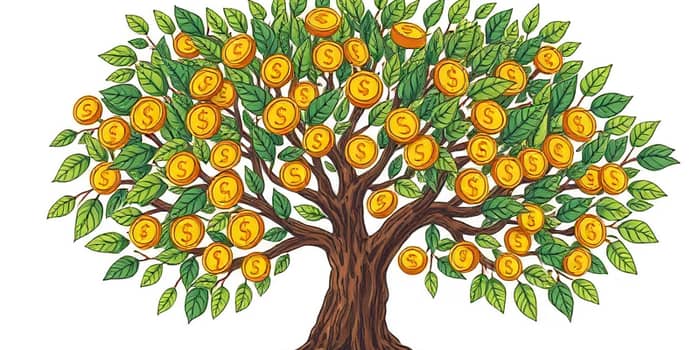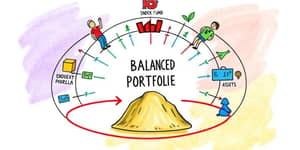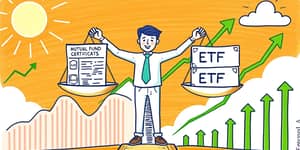
Dividend growth investing is a proven strategy that emphasizes shares in companies that raise payouts year after year. By focusing on businesses with stable cash flows and disciplined capital allocation, investors can lock in consistent income growth over time and benefit from share appreciation. Unlike chasing speculative high yields that may disappear in a market downturn, dividend growers offer a track record of resilience and a pathway to financial independence. This article will guide you through the fundamentals, showcase real-world examples, and provide actionable steps to harness the power of reinvested dividends.
Reliable dividend growers serve as a cornerstone for retirement planning, supplemental income, and wealth accumulation. They attract both conservative and growth-minded investors because dividends can be reinvested, used for living expenses, or allocated to diversify a broader portfolio. With a disciplined approach over multiple economic cycles, these stocks often outperform passive benchmarks, making them a versatile tool for investors across all stages of life.
At its core, dividend growth investing targets firms that not only distribute profits to shareholders but also raise their dividend payouts on a regular basis. These companies often boast strong competitive positions, robust cash flow generation, and a disciplined approach to capital deployment. While high-yield stocks may attract investors seeking immediate returns, they can suffer from unsustainable payout ratios or deteriorating balance sheets.
By contrast, dividend growers demonstrate sound financial health and stability and reduce the likelihood of sudden cuts during economic stress. Companies with payout ratios below 70%, manageable debt levels, and consistent free cash flow generation are top candidates. This selective focus helps investors avoid the pitfalls of chasing high yields at the expense of long-term security.
Investing in companies with a history of rising dividends offers several compelling benefits:
Moreover, dividend growers historically experience smaller drawdowns during market corrections. For example, during the 2020 pandemic slump, top-tier dividend growth portfolios declined less than the broader market and rebounded faster, thanks in part to loyal shareholder bases and defensive business models.
One of the most transformative aspects of dividend growth investing is the ability to reinvest payouts automatically. By enrolling in a dividend reinvestment plan (DRIP), shareholders purchase additional shares with cash dividends, amplifying the powerful snowball effect of compounding. Over time, each new share contributes its own dividend, creating a feedback loop that accelerates portfolio growth.
Consider an initial $10,000 allocation in a diversified basket of dividend growers with a 3% starting yield and a 10% dividend growth rate. By reinvesting distributions quarterly and assuming a 7% annual price appreciation, the position could grow to over $26,000 in just five years. Tools like online dividend calculators allow investors to model these outcomes by adjusting yields, growth rates, and reinvestment schedules.
Many brokerages offer zero-commission DRIPs and fractional share support, lowering barriers for small investors. Whether you start with a few hundred dollars or a substantial lump sum, automated reinvestment can build momentum without ongoing cash contributions.
To build a resilient dividend growth portfolio, investors must assess both yield sustainability and growth potential. Key evaluation criteria include:
By prioritizing firms that reduces risk of dividend cuts during downturns, investors safeguard their income streams and avoid yield traps associated with overly generous payouts on shaky foundations. Red flags include inconsistent cash flows, high leverage, or reliance on one-time asset sales to fund dividends.
Diversification is crucial to avoid overexposure to any one sector or economic cycle. Consider spreading investments:
A sample allocation might be 25% consumer staples, 20% healthcare, 20% utilities, 15% financials, and 20% technology. By diversify across key sectors consistently, an investor can smooth out sector-specific volatility and maintain a reliable income base. Rebalancing annually ensures alignment with evolving market conditions and sector weightings.
Historical data shows that dividend growth stocks have outperformed non-dividend payers over full market cycles, offering balanced total returns in volatile markets. During the 2008 financial crisis, high-quality dividend growers typically declined less than the broader market and recovered more rapidly. In inflationary periods, rising payouts help offset the eroding spending power of fixed income and bond instruments.
The current market environment, driven by technology and growth themes, has sometimes overshadowed dividend strategies. However, as interest rates and inflation fluctuate, well-chosen dividend growers often regain favor for their income stability and defensive attributes.
These figures illustrate how even modest initial allocations can snowball into substantial positions when dividends are reinvested and growth rates are sustained.
Transitioning to a dividend growth portfolio can be seamless if you follow a structured approach:
Avoid overreacting to short-term market swings. Maintain a disciplined long-term execution strategy and focus on underlying business fundamentals. Track extra metrics such as dividend growth rate, payout ratios, and sustainable cash flows to keep your portfolio aligned with your income objectives.
Additionally, consider the tax implications of dividend income in your jurisdiction. Many regions offer preferential rates for qualified dividends, which can enhance the after-tax return of your portfolio. Finally, remain patient and maintain a long-term perspective. The true benefits of dividend growth investing emerge through time and disciplined execution.
By embracing dividend growers, investors position themselves for a powerful combination of rising income and capital appreciation. Implementing the strategies outlined here can help you build a self-sustaining income machine that leverages the beauty of compounding returns to achieve financial goals.
References













